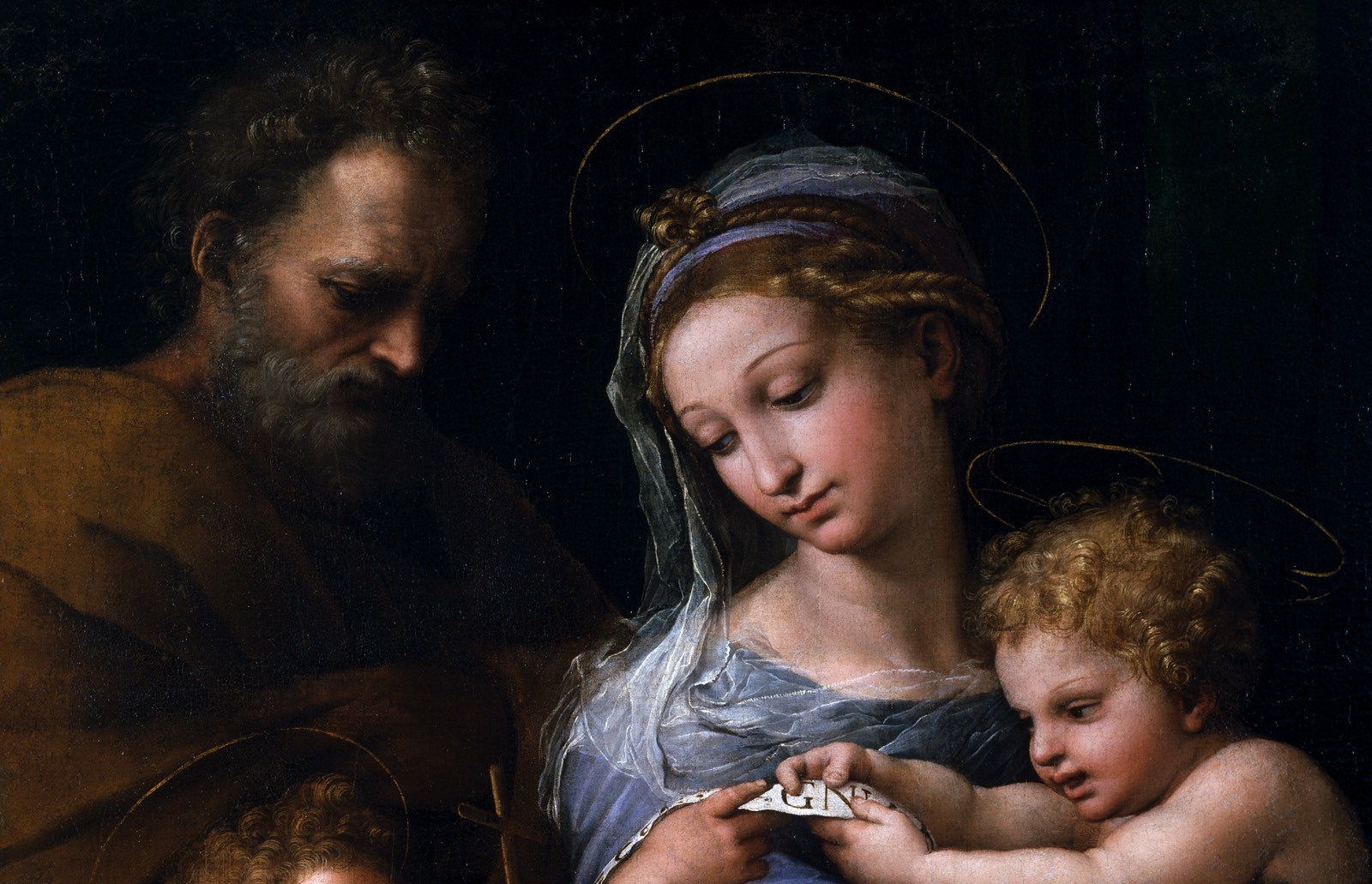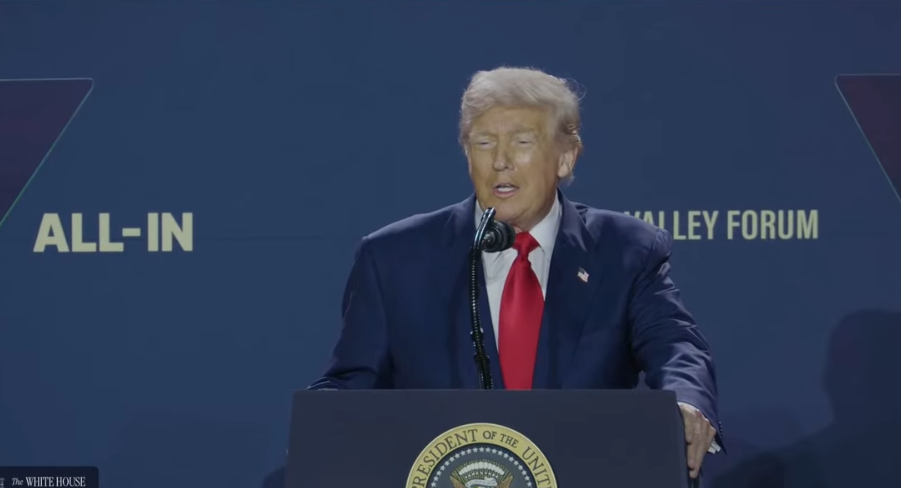See the dude in the top left corner of the top of the painting above (Raphael’s famous Madonna della Rosa)? That’s St. Joseph lurking over the Madonna, the Child, and St. John. And yes, he does seem to be painted differently than the others, something scholars have always attributed to someone else actually painting St. Joseph in the Madonna of the Rose painting.
But since you can talk to the Renaissance master about his painting, and since there could be several reasons why Raphael himself might have opted for this particular display of St. Joseph, it’s really up to the person in front of the painting to make up their own mind about what they’re looking at.
But fast forward to the 21st century and the dawn of increasingly intelligent AI models, and we seem to have a definitive answer. It wasn’t Raphael who painted the face in the background. For reasons unknown, someone else got to do that.
While AI can look at the painting differently and determine that not all four faces were drawn by the hands of the same person, it can’t necessarily tell us who painted St. Joseph.
As ScienceAlert reports, researchers from the UK and the US came up with a custom analysis algorithm in recent years, producing a research paper in 2023 on the work that has gone into proving that speculations about the Madonna della Rosa piece were right.
“Using deep feature analysis, we used pictures of authenticated Raphael paintings to train the computer to recognize his style to a very detailed degree, from the brushstrokes, the color palette, the shading and every aspect of the work,” Professor Hassan Ugail explained a couple of years ago when the research was first published.
“The computer sees far more deeply than the human eye, to microscopic level.”
They repurposed a Microsoft pre-trained architecture called ResNet50 and combined it with a Support Vector Machine ML technique to identify Raphael’s paintings. The tech has been used before, showing 98% accuracy in identifying the artist’s works. Those experiments had the AI look at entire paintings.
This time, the researchers retrained the model to look at faces in paintings rather than the whole thing. They then told the AI to look at Madonna della Rosa as a whole and then at the faces.
The AI’s analysis of the entire painting was inconclusive. However, when it examined the individual parts of the painting, it determined that Raphael did not paint St. Joseph’s face.
Science Alert points out that Giulio Romano may have painted the fourth face, but that’s not certain. Maybe the same type of algorithm could be used to find the author of the fourth face, assuming you have enough works to train the AI on. The model would have to see enough paintings from the same artists to be able to recognize their partial work in other masterpieces.
Madonna della Rosa was painted on canvas between 1518 and 1520. That would have given Raphael ample time to finish the work and to entrust some of his apprentices with that particular corner of the painting, likely knowing that nobody would question his work.
On the other hand, Raphael died in 1520, which is an exceptional reason for one of his closest collaborators to finish the painting and deliver it to whoever commissioned it. All of this is speculation, of course.
It wasn’t until the mid-1800s that art experts started wondering whether someone else may have helped finish the painting. Also, as the Wikipedia page for Madonna della Rosa explains, Raphael’s attribution was uncertain. The AI can at least prove that three of the faces in the painting were painted by the famed Renaissance artist.
While the study of this particular work of art dropped some two years ago, it’s more relevant than ever, considering the massive advancements in AI-generated imagery we’ve witnessed since then.
This year alone, ChatGPT stunned the world, going viral for its ability to generate and edit images. Google’s Gemini has similar powers, including advanced editing support. These advancements would not have been possible without AI models being fed lots of imagery from different sources.
Raphael and Romano may have spent two years on this painting, but I only needed a few minutes for a text prompt and a photo of Madonna della Rosa to try to redo St. Joseph’s face in the style of the other three faces.
Much to my surprise, GPT-4o has new rules concerning image generation based on copyrighted content, and it would not complete the work. But it would have gotten it done, as you can see in the screenshot above, had ChatGPT not stopped generating.
Like Raphael with the real deal, I might need help getting St. Joseph’s face done from a different AI. Alas, you can find the AI research proving that Madonna della Rosa is a collaboration between Raphael and a trusted apprentice rather than a fully original work at this link.









